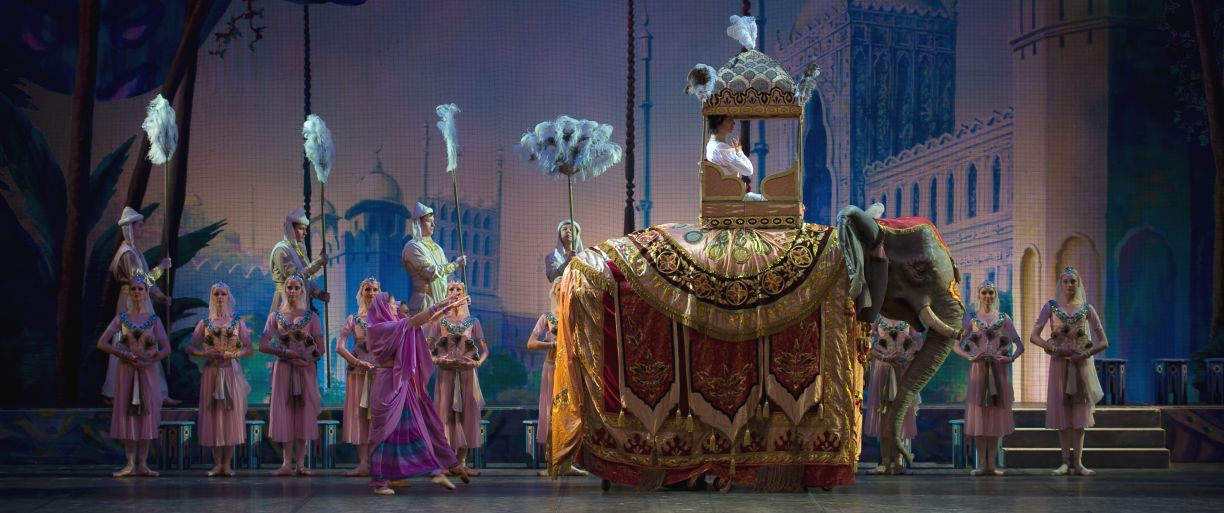La Bayadère
ballet in three acts
music by Ludwig Minkus
Duration
3 hours
Cast

Nikiya
Irina Perren

Solor
Artyom Pykhachov

Conductor
Mikhail Pabuzin
The Great Bramin — Andrey Bregvadze
Bronze Idol — Anton Ploom
Three shades — Anastasia Lomachenkova, Elvira Khabibulina, Irina Kosheleva
Bronze Idol — Anton Ploom
Three shades — Anastasia Lomachenkova, Elvira Khabibulina, Irina Kosheleva
Premiere of the production: October 21, 2000
La Bayadère is just one of several lavish ballets created by Marius Petipa which take place in ‘exotic’ settings. Marius Petipa, the famed choreographer of St Petersburg, created La Bayadère in 1877, basing it on a play by an Indian poet. A bayadère is a female temple dancer. Such figures were popular in 19th-century ballets when character dancing was often contrasted with pure classical dance. This is the only surviving such ballet set wholly in the exotic East.
It is a true Romantic ballet in structure, as its two acts are full of local colour and domestic wranglings, while the third act takes place in an all-white other world inhabited by ghostly beings. One of the most impressing scenes of the third act is the one called The Kingdom of the Shades . According to the choreographer’s own memoirs, the mesmerizing choreographic solution used for the entrance of the original 48 ’Shades’, had been prompted by an engraving by the Romantic artist Gustave Doré.
La Bayadère is just one of several lavish ballets created by Marius Petipa which take place in ‘exotic’ settings. Marius Petipa, the famed choreographer of St Petersburg, created La Bayadère in 1877, basing it on a play by an Indian poet. A bayadère is a female temple dancer. Such figures were popular in 19th-century ballets when character dancing was often contrasted with pure classical dance. This is the only surviving such ballet set wholly in the exotic East.
It is a true Romantic ballet in structure, as its two acts are full of local colour and domestic wranglings, while the third act takes place in an all-white other world inhabited by ghostly beings. One of the most impressing scenes of the third act is the one called The Kingdom of the Shades . According to the choreographer’s own memoirs, the mesmerizing choreographic solution used for the entrance of the original 48 ’Shades’, had been prompted by an engraving by the Romantic artist Gustave Doré.
Libretto: Marius Petipa, Sergey Khudekov
Choreography: Marius Petipa revised by Vladimir Ponomaryov, Vakhtang Chabukiani, Konstantin Sergeyev, and Nikolay Zubkovsky
Stage and Costume Design: Vyacheslav Okunev
Lighting Design: Mikhail Mekler
Choreography: Marius Petipa revised by Vladimir Ponomaryov, Vakhtang Chabukiani, Konstantin Sergeyev, and Nikolay Zubkovsky
Stage and Costume Design: Vyacheslav Okunev
Lighting Design: Mikhail Mekler



